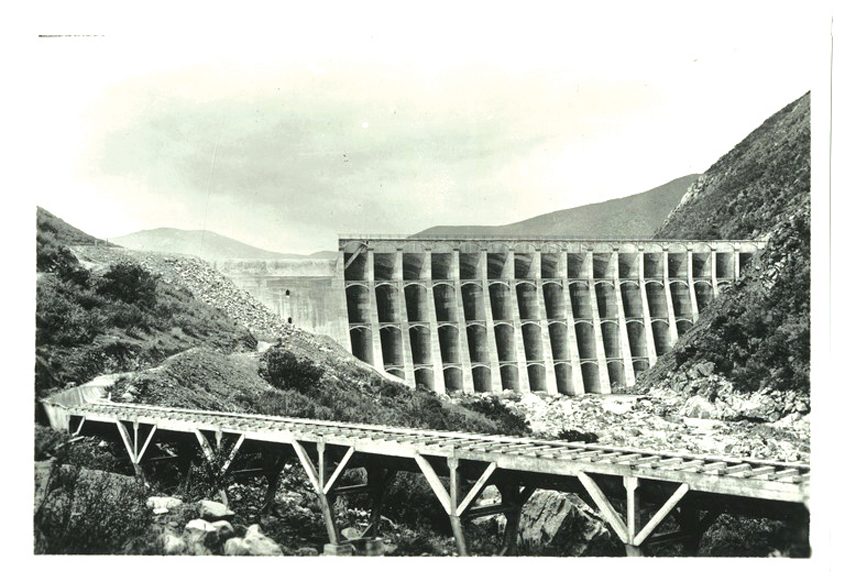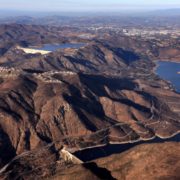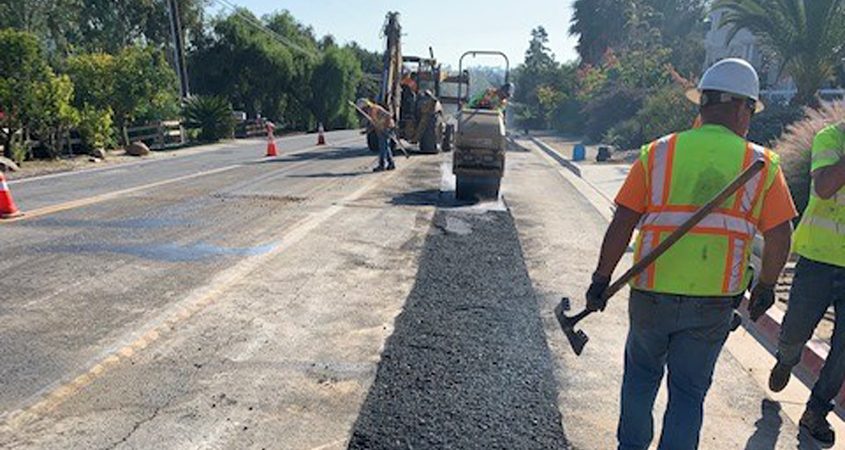As part of continuing efforts to maintain and invest in City of San Diego infrastructure, repair work starts within the next two weeks on Hodges Dam, at the Hodges Reservoir north of Rancho Bernardo.
“It’s been over a century since Hodges Dam was constructed, and we are making significant investments to maintain this vital asset,” said Alia Khouri, Deputy Chief Operating Officer. “Projects like this one are crucial for the City’s aging infrastructure system in order to maintain the safe and efficient delivery of City services.”
During a recent inspection, staff identified areas in the dam wall that require repair and need to be sealed. To access these areas, the water level of the reservoir needs to be lowered by approximately 18 feet from its current level to an elevation of 275 feet. The reservoir may need to be lowered below 275 feet if additional areas needing repair are identified during the project. The repair project is expected to continue for an estimated five months.
Water transfers to maximize savings

The Hodges Dam, shown here in 1929, was built in 1918. Photo: UC San Diego
The primary function of Hodges Reservoir is to store water for potable use. The City is working with its regional water agency partners on a plan to draw down the reservoir level to maximize water savings. Most, if not all, of the water will be transferred to other reservoirs, while some water may be released into the San Dieguito River.
“The City of San Diego is committed to maintaining Hodges Dam to ensure the protection of our water resources and public enjoyment of the reservoir,” said Juan Guerreiro, Interim Director of the City’s Public Utilities Department. “We appreciate the public’s patience while we complete the project.”
To access areas of the Hodges Dam for repairs, the water level of the reservoir needs to be lowered by approximately 18 feet from its current level to an elevation of 275 feet. As a result of the lower water level, the Hodges Reservoir will be closed for recreation while the repair project is underway. Boating and fishing will still be available at other City of San Diego reservoirs. The San Dieguito River Park trails and facilities around Hodges Reservoir will not be impacted during the drawdown or dam construction work.
Operated and maintained by the San Diego Public Utilities Department, the reservoir currently serves the San Diego County Water Authority, San Dieguito Water District, and Santa Fe Irrigation District, and the City of San Diego. San Diego operates nine reservoirs, including Hodges.
(Editor’s note: The City of San Diego, San Dieguito Water District, and the Santa Fe Irrigation District are three of the San Diego County Water Authority’s 24 member agencies that deliver water across the metropolitan San Diego region.)







